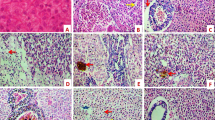Abstract
The effects of carbaryl (1-naphthalenyl methylcarbamate), commonly used in agricultural operations, have been studied with reference to survival, behavior, food intake, growth, and conversion efficiency of the catfishMystus vittatus. At a concentration of 32.5 ppm, carbaryl caused 100% mortality within 24 hr; the 72 hr LC50 was 17.5 ppm. At concentrations of 12.5 ppm and below, it caused no mortalities within 72 hr. But such sublethal concentrations accelerated the swimming activity and increased the frequency of opercular beats. The latter response was dose-dependent. These behavioral changes were the immediate response to the toxicant and were indicators of possible stress. A 27-day exposure to sublethal concentrations of carbaryl led to a decrease in feeding rate and growth rate. The latter decreased from 10.15 mg/g/day (freshwater) to 2.84 mg/g/day (12.5 ppm). The reduced growth and conversion efficiency may be due to the expenditure of more energy for the purpose of maintenance. Therefore, the insecticide is considered to be a metabolic Stressor.
Similar content being viewed by others
References
Arunachalam, S.: Salinity stress on the swimming behavior of juvenile freshwater catfish,Mystus vittatus (Bloch), Proceedings of the 7th annual conference of the ethological society of India, Madras, No. VB 3/39, 28 (1978).
Arunachalam, S. and S. Ravichandra Reddy: Food intake, growth, food conversion, and body composition of catfish exposed to different salinities. Aquaculture16, 163 (1979).
Arunachalam, S., S. Aboobucker, and K. Jayalakshmi: Studies on comparative effects of DDT and carbaryl on the food intake, growth, and conversion efficiency inMacropodus cupanus at sub-lethal levels, Indian Jour. Exp. Biol. (Communicated) (1979).
Carter, F. L.:In vivo studies of brain cholinesterase inhibition by organophosphate and carbamate insecticides in fish. Ph.D. Thesis, University of Louisiana, Baton Rouge, Louisiana (Diss. Abstr. Int.,13: 2772–2773) (1971).
Chapman, G. A., and D. L. Shumway: Effects of sodium pentachlorophenate on survival and energy metabolism of embryonic and larval steelhead trout. In K. Ranga Rao (ed.): Pentachlorophenol. Chemistry, pharmacology, and environmental toxicology, p. 285. New York-London: Plenum (1978).
Day, F.: The fishes of India Vol. I, Today and Tomorrow. Book Agency, New Delhi (1967).
Desi Illes, Lili Genczi Gyorgy Simon, Ildiko Farkas, and Zsuzsa Kneffel: Neurotoxicologic studies of two carbamate pesticides in sub-acute animal experiments Toxicol. Appl. Pharmacol.27, 465 (1974).
Hashimoto, Y.: Impact of pesticide use on the Japanese environment in Hidetsugu Ishikura (1-32) Environmental toxicology of pesticides. F. Matsumura, G. Mallory Boush and T. Misata (ed.): New York-London: Academic Press (1972).
Jhingran, V. G.: Fish and Fisheries of India Hindustan Publishing Corp., New Delhi (1977).
Kingsley, Kay: Toxicology of pesticides. Recent advances. Environ. Res.6, 202 (1973).
Malliga, G.: The influence of salinity and body size on the susceptibility ofTilapia mossambica to three pesticides M.Sc. dissertation, Madurai Kamaraj University, Madurai, India (1979).
Mathialaga Raj: Comparative toxicities of six pesticides to a freshwater LoacheLepidocephalus thermalis, M.Sc. dissertation, Madurai Kamaraj University, Madurai, India (1978).
Maynard, A. L., and K. J. Loosli: Animal nutrition. 5th ed. New York: McGraw-Hill (1962).
Munawar Ahmed Anees: Acute toxicity of four organophosphorus insecticides to a freshwater teleost fishChanna punctuatus (Bloch), Pakistan J. Zool.7, 135 (1975).
Nagendran, R., and K. Shakuntala: Effects of sub-lethal concentrations of sodium pentachlorophenate on the ecophysiology ofPuntius ticto (Ham), Indian Jour. Exp. Biol.17, 270 (1979).
Pandian, T. J., R. Bhaskaran, and E. Vivekanandan: Effect of PO2 on surfacing activity and food utilization in the air-breathing perchAnabas scandens, Pol. Arch. Hydrobiol.24, 191 (1977).
Petrusewicz, K., and A. MacFadyen: Productivity of terrestrial animals. IBP Hand Book No. 13, Oxford: Blackwell (1970).
Vernberg, F. J., A. Calabrese, P. F. Jhurberg, and W. B. Vernberg: Physiological response of marine biota to pollutants New York: Academic Press (1977).
Webb, P. W., and J. R. Brett: Effects of sub-lethal concentrations of sodium pentachlorophenate on growth rate, food conversion efficiency, and swimming performance in underyearling Sockeye Salmon (Oncorhynchus nerka), J. Fish. Res. Bd. Canada30, 499 (1973).
Wildish, D. S.: Toxicological effects of some organophosphate insecticides to Atlantic Salmon. Fish. Res. Bd. Can. Manver. Res. Ser., 1157 (1971).
Author information
Authors and Affiliations
Rights and permissions
About this article
Cite this article
Arunachalam, S., Jeyalakshmi, K. & Aboobucker, S. Toxic and sublethal effects of carbaryl on a freshwater catfish,Mystus vittatus (Bloch). Arch. Environ. Contam. Toxicol. 9, 307–316 (1980). https://doi.org/10.1007/BF01057410
Received:
Accepted:
Issue Date:
DOI: https://doi.org/10.1007/BF01057410




